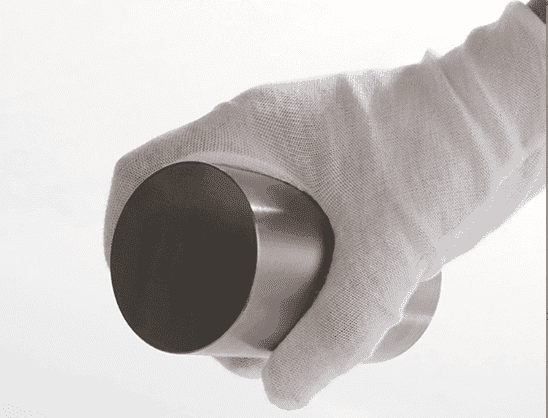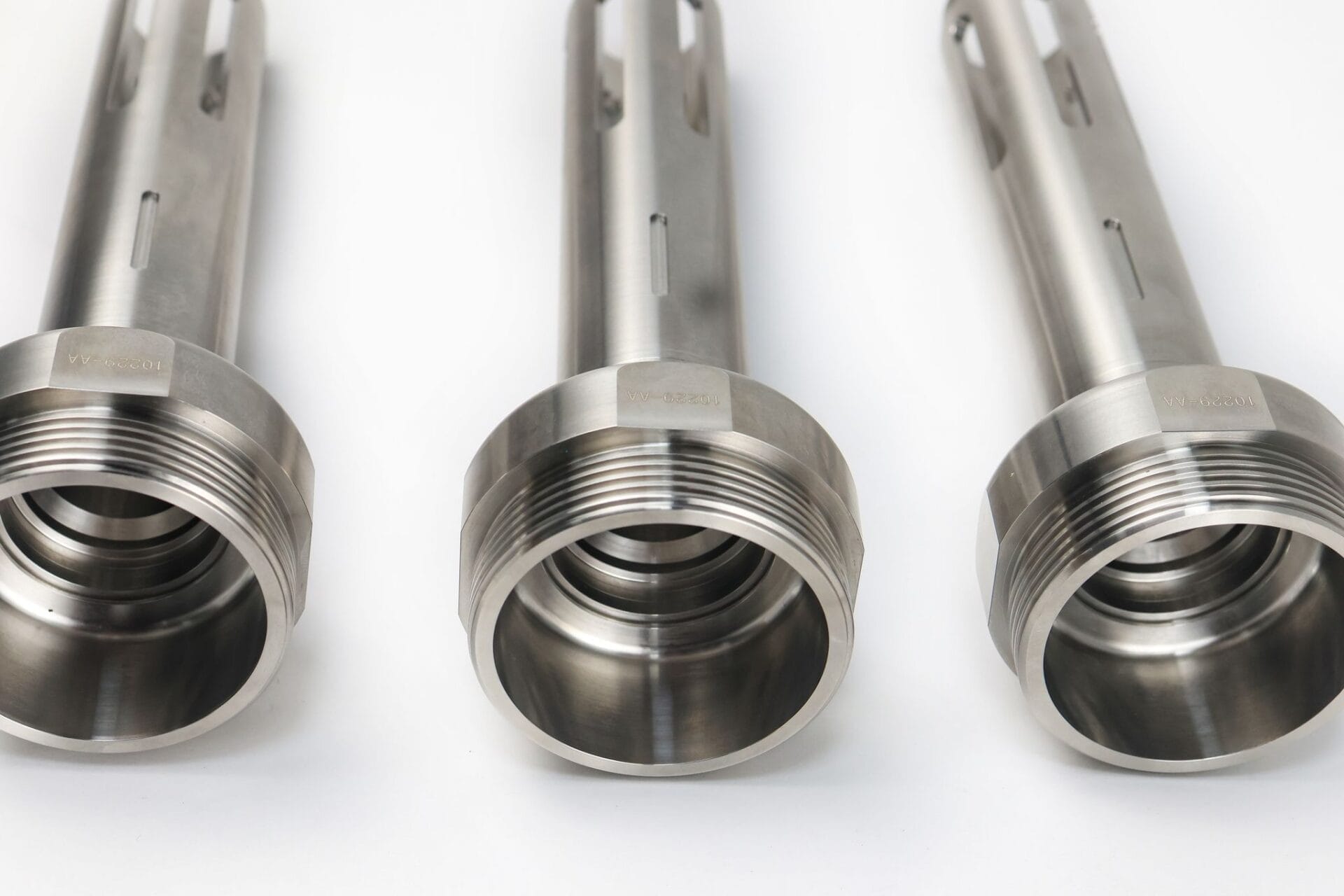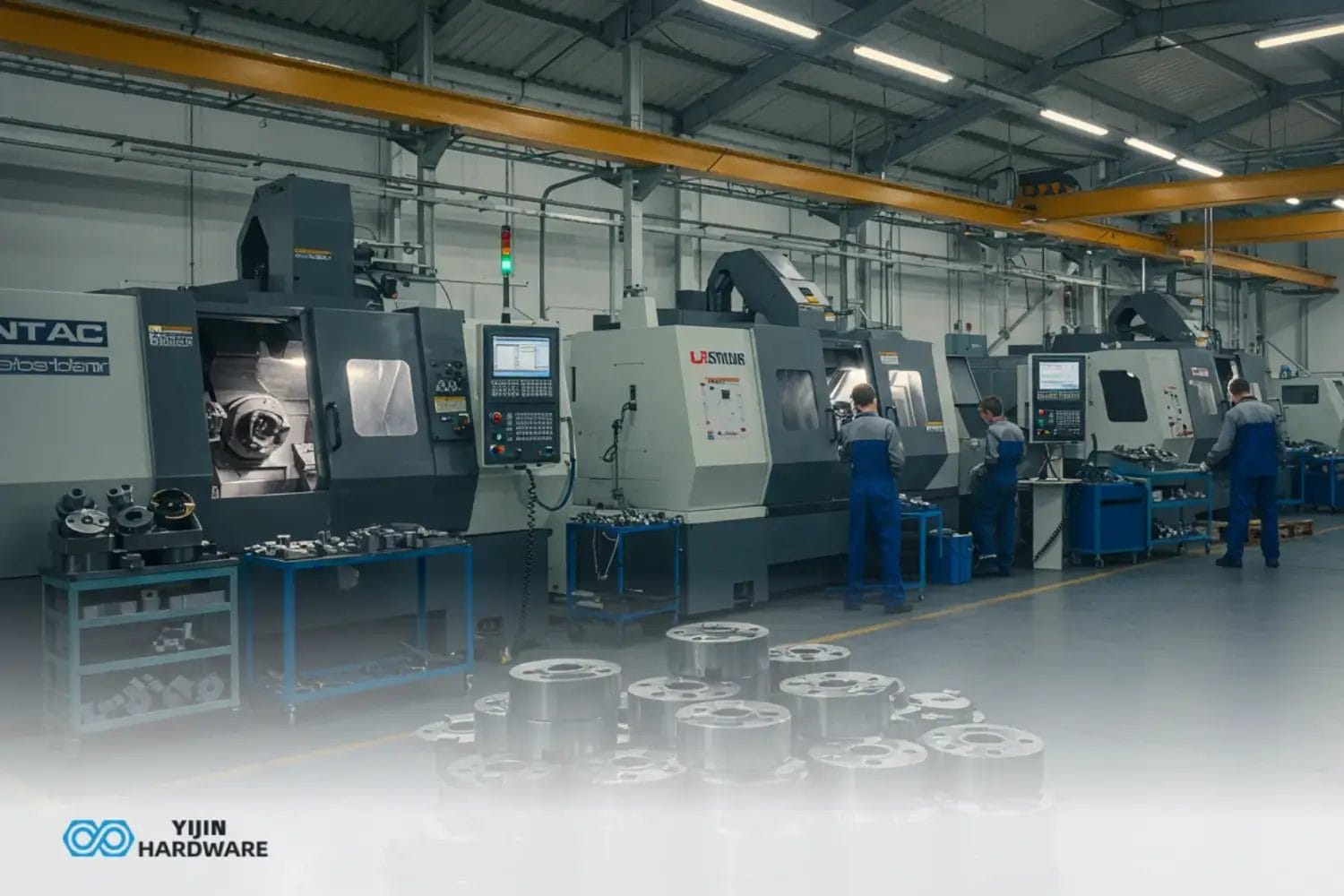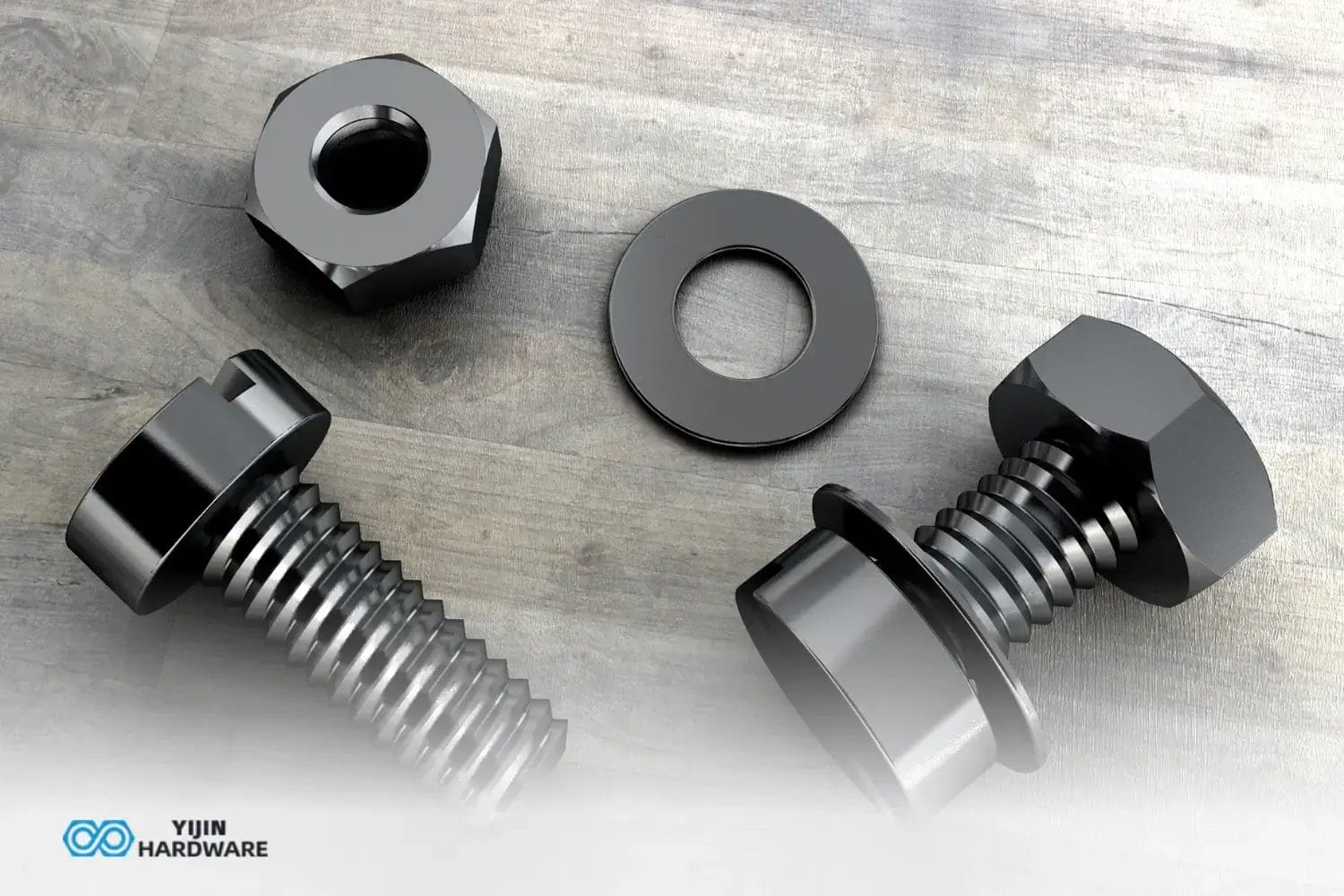Finding the best material for your latest CNC machining project can be a really tough decision. It makes a huge difference in performance, durability, and cost. Titanium and stainless steel are two top metal choices, each with special advantages for many different applications. The difference between titanium and stainless steel starts right at the atomic level. This affects everything, like machinability and performance in harsh environments. Yijin Hardware’s guide below looks carefully at these differences to help you find the perfect material for your needs.
Key Takeaways
- Titanium offers superior strength-to-weight ratio (280 kN·m/kg vs. steel’s 70 kN·m/kg) but costs significantly more ($45/kg vs. $6/kg for 304 stainless).
- Stainless steel vs. titanium comparison shows steel provides excellent corrosion resistance for most applications, while titanium excels in extreme environments.
- Machining titanium requires specialized techniques, with cutting speeds 35% lower than those used for stainless steel.
- Material selection should prioritize application requirements over titanium material cost for critical components in aerospace, medical, and marine applications.
- Yijin Hardware delivers precision CNC machining for both metals with strict adherence to industry standards.
What are the Fundamental Differences Between Titanium and Stainless Steel?
Titanium is a naturally occurring elemental metal with a hexagonal close-packed (HCP) crystal structure below 882 °C that creates its unique properties. Stainless steel is an alloy made of iron, carbon, and at least 10.5% chromium that forms a passive chromium oxide layer for corrosion protection. These atomic-level structural differences directly impact workability, with titanium’s properties that make them suitable for lightweight, high-strength applications.
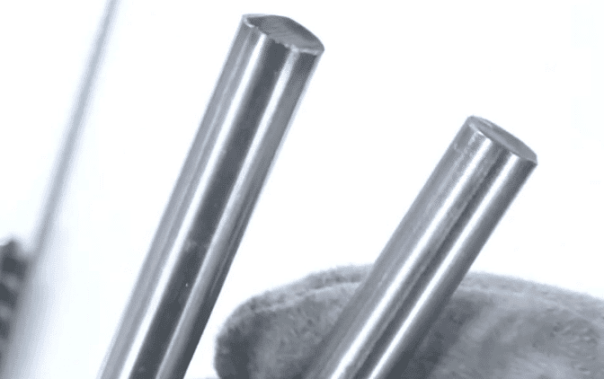
The difference between titanium vs. conventional metals extends to their electron configuration, with titanium’s incomplete d-shell contributing to its chemical reactivity and material characteristics. Steel alloys, particularly stainless varieties, have unique properties that make them excellent for structural applications, while titanium is often selected for extreme performance requirements. Both stainless steel and titanium serve different metallurgical niches, with titanium offering a Poisson’s ratio of 0.34 compared to 304 stainless steel’s 0.29.
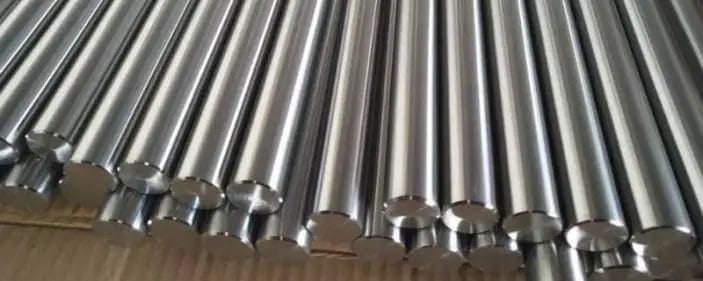
Elemental Composition
The elemental composition varies significantly between these materials. Titanium material properties include excellent strength combined with low density, while stainless steel material properties feature excellent formability and corrosion resistance. Titanium steel vs. stainless steel comparisons often highlight these fundamental differences.
| Property | Titanium (Grade 5) | 304 Stainless |
|---|---|---|
| Crystal Structure | HCP (below 882 °C) | FCC (austenitic) |
| Density | 4.5 g/cm³ | 8.0 g/cm³ |
| Thermal Conductivity | 21.9 W/m·K | 16.2 W/m·K |
| Melting Point | 1668 °C | 1400-1450 °C |
Titanium vs. Stainless Steel: How do the Mechanical Properties Compare?
Titanium is stronger than stainless steel when comparing strength-to-weight ratio, with Grade 5 titanium alloy providing tensile strength up to 1100 MPa while being lighter than stainless steel. Stainless steel offers good overall strength with higher hardness (210 HV compared to some titanium grades) and excellent mechanical properties for structural applications.
Titanium is stronger than steel in specific strength metrics, though a specialized maraging steel can be stronger than a titanium alloy in absolute terms. While titanium comes in various grades (1-38 per ASTM standards), its Young’s modulus (110 GPa) is approximately half that of stainless steel (200 GPa), giving titanium components greater flexibility. Titanium is alloyed with elements like aluminum (6%) and vanadium (4%) in Ti-6Al-4V to optimize strength and resistance to fatigue, making it ideal for cyclic loading applications where stainless steel is generally less effective.
Fatigue and Fracture Properties
Titanium possesses significantly higher fatigue resistance than stainless steel, with Grade 5 titanium sustaining approximately 500 MPa of cyclical stress compared to 240 MPa for 304 stainless. This superior resistance makes titanium ideal for applications with repeated loading cycles.
Fracture toughness presents a different picture, with 304 stainless steel offering values around 100 MPa√m versus titanium’s 70 MPa√m. This property becomes crucial in applications where crack resistance matters more than weight considerations.
Comparative Strength Metrics
- Specific Strength: Titanium (280 kN·m/kg) vs. Steel vs (70 kN·m/kg)
- Tensile Strength: Grade 5 Titanium (1100 MPa) vs. 304 Stainless (515-750 MPa)
- Yield Strength: Grade 5 Titanium (1000 MPa) vs. 304 Stainless (215 MPa)
Stainless Steel and Titanium: Which Material Offers Better Corrosion Resistance?
Titanium creates a passive oxide layer that provides exceptional protection with seawater corrosion rates measuring just 0.0005 mm/year, as seen in a study conducted by the University of Akron. Stainless steel’s resistance comes from its chromium content, which forms a protective layer that offers good protection in many environments but shows higher corrosion rates in seawater for 316 stainless steel.
The pros and cons of titanium include exceptional strength and corrosion capabilities but at significantly higher cost and machining difficulty. While duplex stainless grades like 2205 combine ferrite and austenite phases for improved pitting resistance (PREN values >35), they remain susceptible to chloride attacks where titanium has a high immunity. In galvanic coupling scenarios, titanium sits at -0.05V on the galvanic series compared to stainless steel at -0.15V, meaning titanium is nobler and better protected in mixed-metal assemblies.
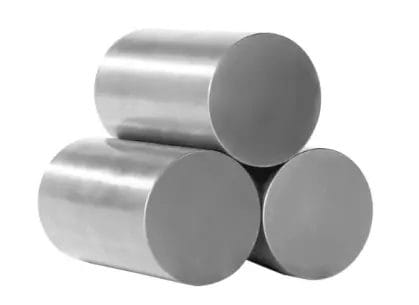
Chemical Resistance Comparison
Titanium and stainless steel provide different levels of protection against chemicals. Titanium withstands 10% hydrochloric acid at 35 °C without significant degradation, while stainless steel may begin to fail in similar conditions. In chloride-containing environments, the performance gap widens significantly, with titanium’s corrosion resistance maintaining structural integrity while most stainless steel grades experience pitting.
For applications involving:
- Marine environments: Titanium outperforms all stainless variants
- Chemical processing: Titanium provides superior acid resistance
- Standard indoor applications: 304 stainless offers adequate protection at a lower cost
- Food processing: 316 stainless is generally more affordable than titanium while providing the necessary protection
What are the Manufacturing Challenges for Each Material?

Machining titanium presents unique challenges due to 35% lower cutting speeds compared to stainless steel and significant tool wear rates. The titanium material demands carbide tooling with specific geometries, high-pressure coolant delivery, and rigid machine setups to prevent chatter and maintain dimensional accuracy.
Titanium-Specific Cutting Parameters
- Cutting speeds: 30-60 m/min (compared to 90-120 m/min for stainless)
- Feed rates: Higher than stainless to minimize work hardening
- Tool coatings: AlTiN or TiAlN preferred for titanium processing
- Coolant: High-pressure delivery directly at the cutting zone
- Machine rigidity: Critical to prevent deflection and chatter
Stainless steel is also challenging to machine due to work hardening, requiring sharp tooling and consistent feed rates. Although titanium is typically more difficult to process, both materials demand proper cutting parameters to maintain surface finish quality and dimensional accuracy.
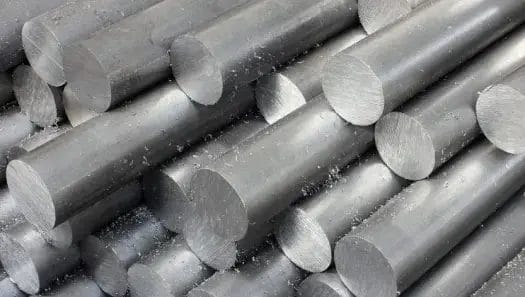
Advanced Machining Solutions
At Yijin Hardware, we’ve implemented specialized machining protocols:
| Process Element | Titanium Approach | Stainless Steel Approach |
|---|---|---|
| Tooling | Custom geometries with positive rake angles | Sharp tooling with chip breakers |
| Cutting Strategy | High feed, lower speed with consistent engagement | Moderate feed/speed with flood cooling |
| Fixturing | Extra rigid with minimal overhang | Standard clamping with proper support |
| Surface Treatment | Chemical milling for stress relief | Electropolishing for passive layer enhancement |
How do Welding Requirements Differ?
Titanium welding requires extraordinary environmental controls due to its high reactivity. The material’s sensitivity to contamination means stainless steel is often preferred when welding is a primary fabrication method. Even minor atmospheric exposure can compromise titanium welds by introducing oxygen, nitrogen, or hydrogen embrittlement.
Critical Welding Parameters Comparison
- Titanium:
- Requires specialized equipment with precise control
- Needs thorough pre-weld cleaning procedures
- Demands post-weld inspection for quality verification
- Typically uses pure titanium filler materials
- Stainless Steel:
- Works with standard TIG/MIG equipment
- Accepts moderate pre-weld cleaning requirements
- Benefits from post-weld passivation
- Uses standardized filler materials (ER308L, ER309)
Our facilities accommodate both materials, with specialized chambers for titanium and efficient processes for stainless steel, ensuring optimal weld quality regardless of material selection.
Which Industries Benefit Most from Each Material?
Aerospace engineering leverages titanium’s strength and weight advantages for structural components where efficiency is critical. Medical implants often utilize titanium for its biocompatibility and strength. Martensitic stainless and austenitic stainless varieties serve in different applications based on specific requirements.

Medical Implementation Differences
The medical industry utilizes both materials based on their unique properties:
- Titanium applications:
- Long-term implants and devices (98.7% 10-year survival rate in hip replacements)
- Dental implants with osseointegration requirements
- Prosthetic components requiring lightweight strength

- Stainless steel applications:
- Surgical instruments requiring frequent sterilization
- Temporary implant hardware
- Medical equipment frames and supports
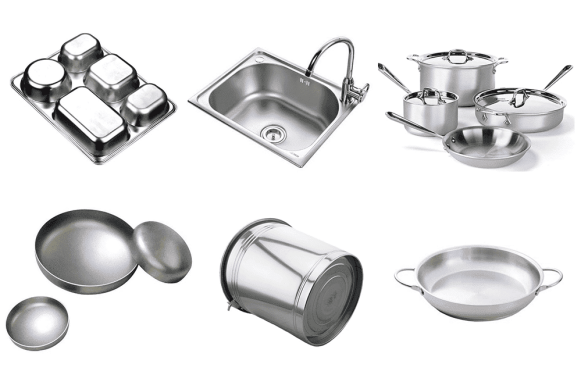
Marine Engineering Applications
Marine applications demonstrate clear material performance differences:
- Titanium ship components show exceptional durability with 50+ years of service life in seawater
- Stainless steel marine parts typically require replacement within 12 to 15 years
- Critical underwater components increasingly use titanium despite higher initial costs
- Non-critical components above the waterline often use stainless for cost-efficiency
Titanium is also excellent for exhaust systems in marine applications where corrosion and heat resistance are critical. Stainless steel is also commonly used in less demanding marine environments.

What are the Cost Considerations Beyond Material Price?
Initial titanium material cost averages $45/kg, compared to approximately $6/kg for 304 stainless. However, lifecycle analysis reveals titanium tends to offer lower total costs in aggressive environments due to reduced maintenance requirements and longer service life.
Manufacturing Cost Factors
- Machining time: Titanium typically requires 40-50% more processing time
- Tool consumption: 3-5× higher tool replacement rate for titanium
- Energy requirements: Higher power consumption for titanium processing
- Scrap value: Titanium maintains a higher recycling value
- Production of titanium: More complex and energy-intensive than steel production
For projects where performance requirements allow either material, our engineering team provides detailed cost analysis considering both initial manufacturing expenses and long-term operational factors.
How to Select the Optimal Material for Specific Applications
Application requirements should drive material selection based on a systematic evaluation framework. For weight-critical applications requiring high strength, titanium typically represents the optimal choice, despite higher costs. In moderate environments where weight is less critical, stainless steel often provides better value.
Decision Matrix Approach
We recommend evaluating these key factors in a weighted decision matrix:
- Mechanical requirements (strength and durability, impact resistance)
- Environmental exposure (corrosives, temperature extremes)
- Weight considerations (mobile vs. static applications)
- Service life expectations (temporary vs. permanent)
- Budget constraints (initial vs. lifecycle costs)
The disadvantages of titanium primarily relate to cost and processing challenges, while its high hardness and strength make it ideal for demanding applications. Stainless steel offers excellent strength and resilience at a lower price point.
What Specialized Manufacturing Capabilities does Yijin Hardware Offer?
Yijin Hardware employs advanced multi-axis CNC machining centers specifically configured for both materials. Our equipment includes high-torque spindles with enhanced rigidity, specialized cooling systems, and precision tool management that maintain tight tolerances even with challenging materials.
Material-Specific Quality Controls
Our quality assurance protocols include:
- Material certification verification to ASTM standards
- In-process monitoring with statistical process control
- Surface quality verification using profilometry
- Dimensional validation using climate-controlled CMM technology
- Non-destructive testing appropriate to application requirements
These specialized capabilities ensure consistent quality across all industries we serve, whether working with titanium alloy or steel grades with unique properties.
Yijin Hardware: Advanced CNC Machining
Selecting between titanium vs. stainless steel requires evaluating your specific application needs against material properties and processing considerations. While titanium is significantly lighter and offers exceptional corrosion performance, stainless steel provides excellent strength and durability at a lower cost for many applications. The optimal choice depends on your project requirements and performance expectations.
At Yijin Hardware, our expertise in machining both materials ensures precision components regardless of your selection. Our engineering team can help evaluate your requirements and recommend the optimal solution based on performance needs and budget considerations. Contact us today to leverage our material expertise for your next precision machining project.
Frequently Asked Questions
Is titanium stronger than steel?
Titanium is stronger than a titanium-free steel when comparing strength-to-weight ratio at 280 kN·m/kg versus 70 kN·m/kg. Grade 5 titanium provides tensile strength up to 1100 MPa while being 45% lighter than stainless steel. For applications where weight matters, titanium delivers superior performance per pound.
Is stainless steel or titanium better for cookware?
Titanium and stainless steel cookware each offer advantages. Titanium is non-toxic, lighter, and provides excellent heat distribution, while stainless steel cookware offers better durability and heat retention. Stainless steel is less expensive and often preferred for everyday cooking, while titanium cookware benefits ultralight applications like camping.
What finishing options create the most durable surfaces?
Titanium anodizing creates a hardened oxide layer that increases surface hardness while providing decorative colored finishes. For stainless steel, electropolishing removes the outermost material layer to enhance the passive film, improving both corrosion properties and cleanability. Both processes offer unique advantages depending on application requirements.
Which is better for medical applications?
Titanium offers superior biocompatibility for long-term implants with proven success rates. Stainless steel’s properties make it well-suited for surgical instruments and temporary devices. The choice between titanium or stainless steel depends on the specific medical application, with titanium preferred for permanent implants and stainless for instruments requiring repeated sterilization.
What are the key differences in thermal properties?
Titanium has a higher thermal conductivity (21.9 W/m·K) than austenitic stainless (16.2 W/m·K), though both conduct heat relatively poorly compared to aluminum. Titanium’s lower thermal expansion rate provides dimensional stability advantages in applications with temperature fluctuations, making it better than stainless steel for aerospace components experiencing extreme temperature changes.
Back to Top: Titanium vs. Stainless Steel: Which is Best for You?


